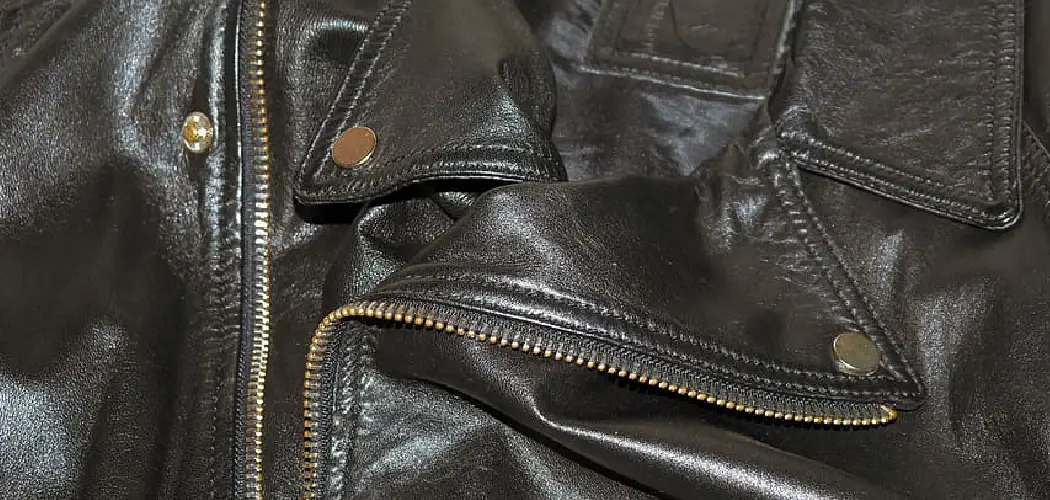Let’s face it, that edgy faux leather jacket may not have the same pedigree as its genuine leather counterpart, but it can still be a wardrobe staple. But when those once-smooth panels start resembling a reptile shedding its skin, it’s tempting to relegate the jacket to the donation pile.
Hold on! Before you say goodbye, know that there’s hope for your peeling faux leather friend. With a little TLC and some clever tricks, you can breathe new life into your jacket and keep it rocking your outfits for seasons to come.
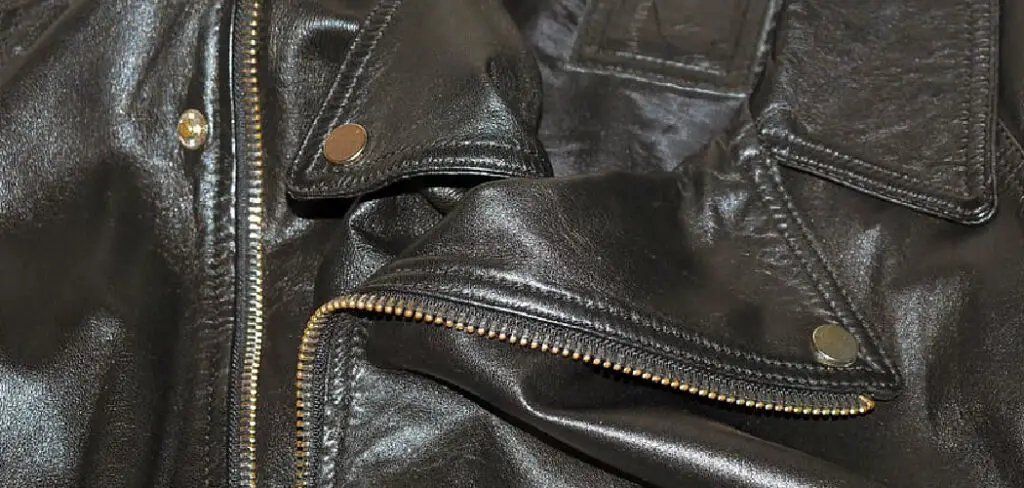
So, ditch the despair and grab your toolbox (metaphorically speaking, for now). We’re about to delve into how to remove peeling faux leather jacket, armed with tips and techniques to combat the dreaded peel. Get ready to say goodbye to those unsightly flakes and hello to a revitalized jacket that’s ready to strut its stuff again!
Factors that Contribute to Faux Leather Peeling
Material Composition and Quality.
The material composition and quality of faux leather can greatly affect its durability. Faux leather is typically made from a combination of plastic and fabric, with the amount of each component varying depending on the manufacturing process. If the plastic used in the faux leather is low quality or if there is too much fabric in the mix, it can cause the material to peel over time.
Improper Care and Maintenance.
Just like any other material, faux leather needs to be properly cared for in order to maintain its appearance and durability. This includes avoiding harsh chemicals or solutions when cleaning, as well as regularly conditioning the material to keep it soft and supple. If faux leather is not taken care of properly, it can become dry and brittle, leading to peeling.

Age and Wear and Tear.
As with any type of clothing, faux leather jackets can also suffer from age and wear and tear. Over time, the material may start to peel or crack, leaving your jacket looking less than perfect. This can be quite frustrating as faux leather is often used as a budget-friendly alternative to real leather.
Fortunately, there are ways to remove peeling faux leather from your jacket and restore its appearance. In this guide, we will go through some tips and tricks on how to remove peeling faux leather from your jacket effectively.
Exposure to Sunlight, Heat, and Chemicals.
Exposure to sunlight, heat, and chemicals can cause peeling in faux leather jackets. This is because these elements can damage the top layer of the faux leather material, causing it to peel off over time.
Sunlight can fade the color of the jacket and weaken its structure, making it more prone to peeling. Heat can also have a similar effect, as it can dry out the material and cause it to become brittle. Chemicals, such as cleaning products or harsh detergents, can strip the jacket’s protective coating and damage the faux leather material.
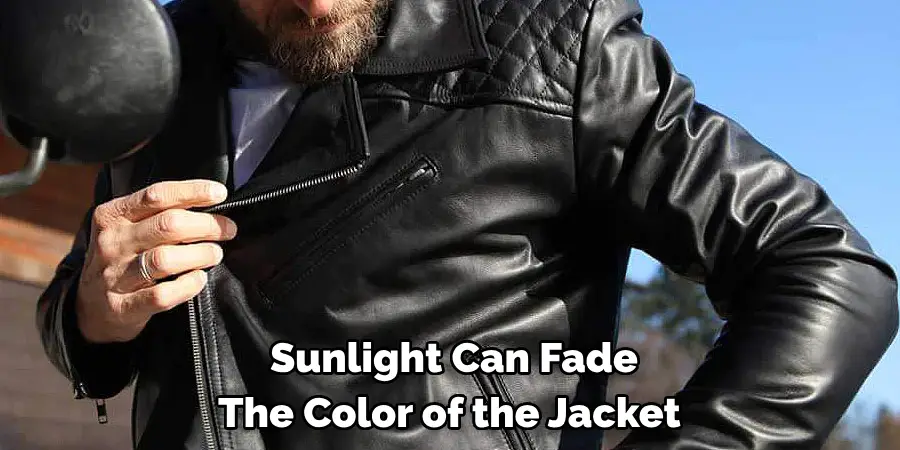
Improper Cleaning and Storage
Faux leather, also known as pleather or synthetic leather, is a popular material used for jackets, bags, shoes and other fashion items. It is designed to mimic the look and feel of real leather at a lower cost. However, one common issue with faux leather is peeling. This can be caused by improper cleaning and storage, which damages the material and causes it to peel off in layers. In this guide, we will discuss how to remove peeling faux leather jacket and prevent this issue from occurring in the future.
10 Methods How to Remove Peeling Faux Leather Jacket
1. Gently Peel Off the Peeling Layer
The first method to remove peeling faux leather from your jacket is to gently peel off the peeling layer. This can be done by using your fingers or a pair of tweezers to carefully lift and remove any loose pieces of faux leather.
2. Use a Razor Blade
If the peeling is more stubborn, you can use a razor blade to carefully scrape off the peeling faux leather. Be sure to work slowly and carefully to avoid damaging the fabric underneath. However, this method should be used with caution as it can easily cause tears or holes in the material.
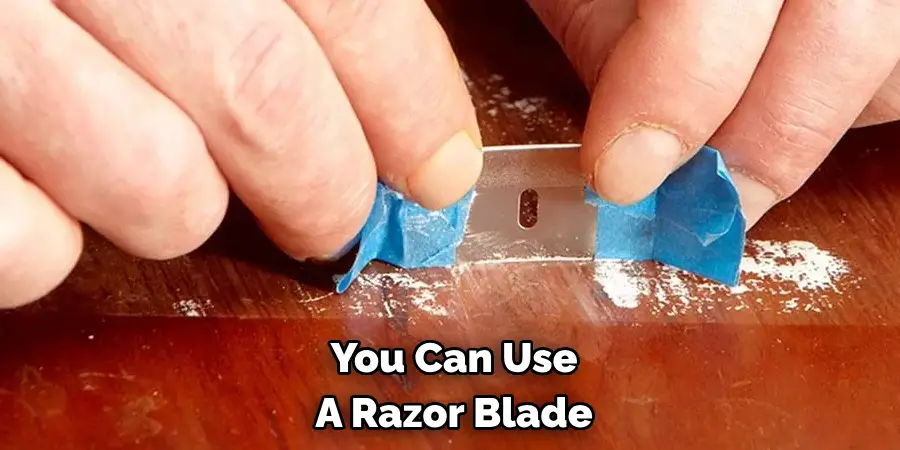
3. Apply Heat
Another method is to use heat to loosen the adhesive holding the faux leather in place. You can use a hairdryer on low heat or a clothing steamer to gently warm up the affected area before attempting to peel off the peeling layer. This can make it easier to remove without damaging the fabric.
4. Rub with Alcohol
Rubbing alcohol can also be effective in removing peeling faux leather from your jacket. Simply apply a small amount onto a cloth and rub it over the affected area until the peeling starts to come off.
5. Try White Vinegar
White vinegar is another household item that can help remove peeling faux leather. Mix equal parts white vinegar and water, then dip a cloth into the solution and gently rub it over the affected area. The acidity of the vinegar can help loosen and remove the peeling pieces.
6. Use Nail Polish Remover
For tougher cases of peeling, nail polish remover can be used as it contains acetone which helps break down adhesives. Apply a small amount onto a cotton ball and rub it over the affected area before wiping away any residue with a damp cloth.
7. Apply Leather Glue
If you have access to leather glue, you can try applying it directly onto the affected area before pressing down firmly with your fingers or using a heavy object like books or weights to hold it in place while it dries. This method can help reattach any loose pieces of faux leather.
8. Sand It Down
In some cases, sanding down the affected area may help smooth out any rough edges and remove the peeling faux leather. Use a fine-grit sandpaper and gently rub it over the affected area until it is smooth. Be sure to go slowly and check the fabric regularly to avoid sanding too much.
9. Cover with Fabric
If the peeling is extensive, you can try covering it up with a piece of fabric that matches your jacket. Simply cut out a piece slightly larger than the affected area and use fabric glue to stick it in place. This can help hide the peeling and prevent further damage.
10. Seek Professional Help
If all else fails, it may be best to seek professional help from a tailor or leather repair shop. They will have the necessary tools and expertise to properly remove the peeling faux leather without causing further damage to your jacket.
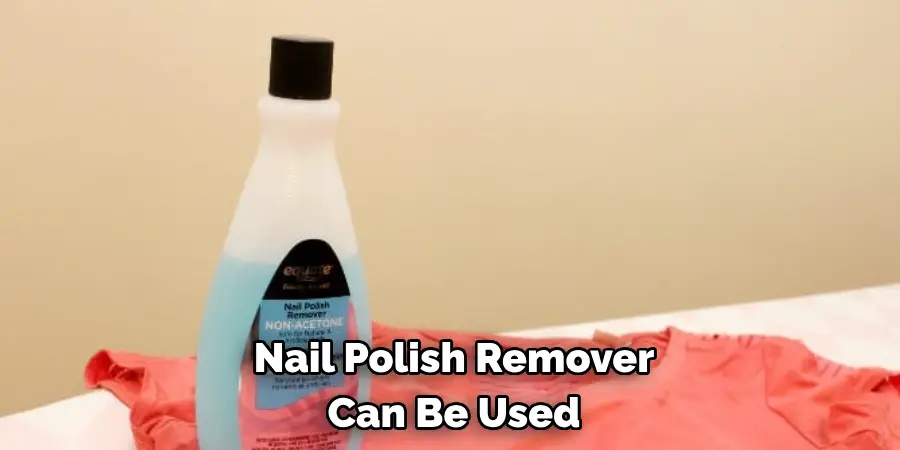
Things to Consider When Removing Peeling Faux Leather Jacket
If you have a faux leather jacket that is starting to peel, it can be frustrating and unsightly. While faux leather jackets are budget-friendly and animal-friendly alternatives to real leather, they do not always hold up as well over time. The peeling may occur due to the type of material used or improper care.
Whatever the reason may be, you may be wondering how to remove the peeling from your faux leather jacket. Before you jump into the process, here are a few things to consider:
1. The Type of Material
Before attempting to remove the peeling from your faux leather jacket, it is important to know what kind of material it is made of. The removal process may vary depending on whether the jacket is made of polyurethane (PU) or polyvinyl chloride (PVC). PU leather tends to be more durable and easier to repair compared to PVC leather.
2. The Extent of Peeling
Another factor to consider is how much peeling has occurred. If it is just a small area, you may be able to fix it yourself. However, if the peeling is widespread and covers a large portion of the jacket, it may be best to seek professional help.
3. Time and Patience
Removing peeling faux leather can be a time-consuming process, especially for larger areas. It requires patience and attention to detail to achieve the desired results. Make sure you have enough time set aside for the task and don’t rush through it.
4. Cleaning Supplies
You will need some basic cleaning supplies to remove peeling faux leather, including a mild soap or detergent, warm water, a soft cloth, and rubbing alcohol. It is important to note that harsh chemicals can cause further damage to the material, so be careful when selecting your cleaning products.
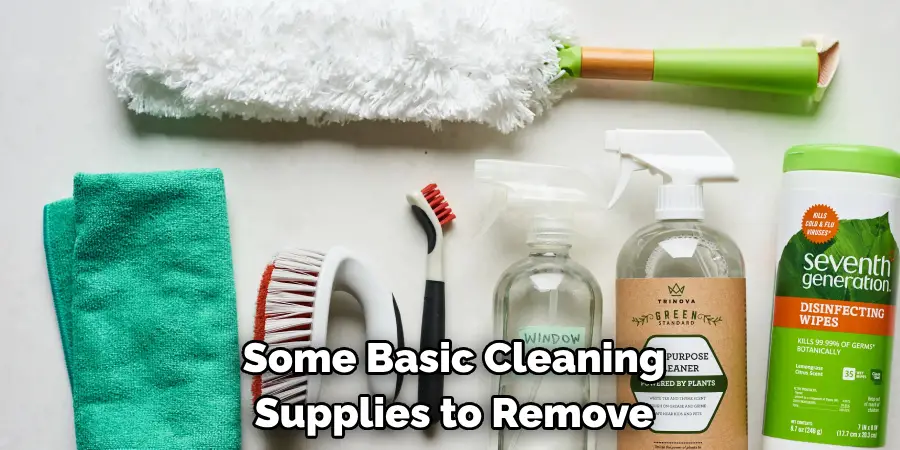
Mistakes to Avoid When Removing Peeling Faux Leather Jacket
When it comes to removing peeling faux leather jackets, there are a few common mistakes people make that can actually end up damaging the jacket even further. In this section, we’ll discuss these mistakes and how you can avoid them.
Using Harsh Chemicals
One of the biggest mistakes people make when trying to remove peeling faux leather is using harsh chemicals. While these chemicals may seem like a quick and easy solution, they can actually strip the faux leather of its protective coating and cause even more peeling. Instead, opt for gentle cleansers or natural alternatives such as vinegar or lemon juice.
Over-Scrubbing
Another mistake people make is over-scrubbing the peeling area. This can cause the faux leather to become even more damaged and may ultimately lead to holes or tears. Instead, use a soft-bristled brush or cloth and gently scrub the area in a circular motion.
Not Testing on a Small Area First
Before trying any cleaning method on your entire jacket, it’s important to test it on a small, inconspicuous area first. This will allow you to see how the material reacts and prevent any potential damage to the entire jacket.
Conclusion
In conclusion, removing peeling faux leather from your jacket may seem like a daunting and tedious task, but with the right tools and techniques, it is completely doable. By following the steps outlined in this post, you can effectively remove the peeling material and restore your beloved jacket to its former glory. With patience and perseverance, you can achieve amazing results! So go ahead and breathe new life into that old faux leather piece hiding in your closet.
Through trial and error, research and perseverance, you have now become an expert on how to remove peeling faux leather jackets! With winter fast approaching and fashion trends continually changing, we hope this guide has been helpful for you. Don’t let those pesky patches ruin your style anymore – take charge of your wardrobe today!

